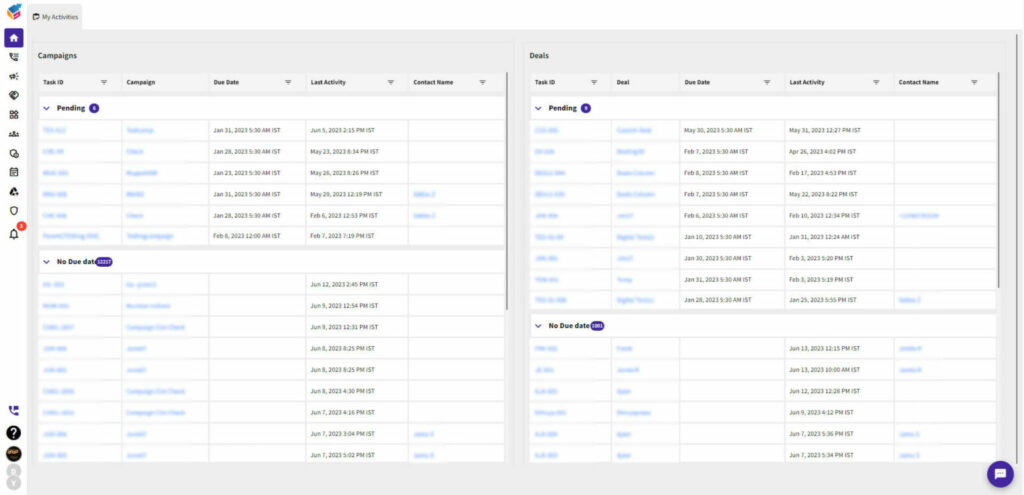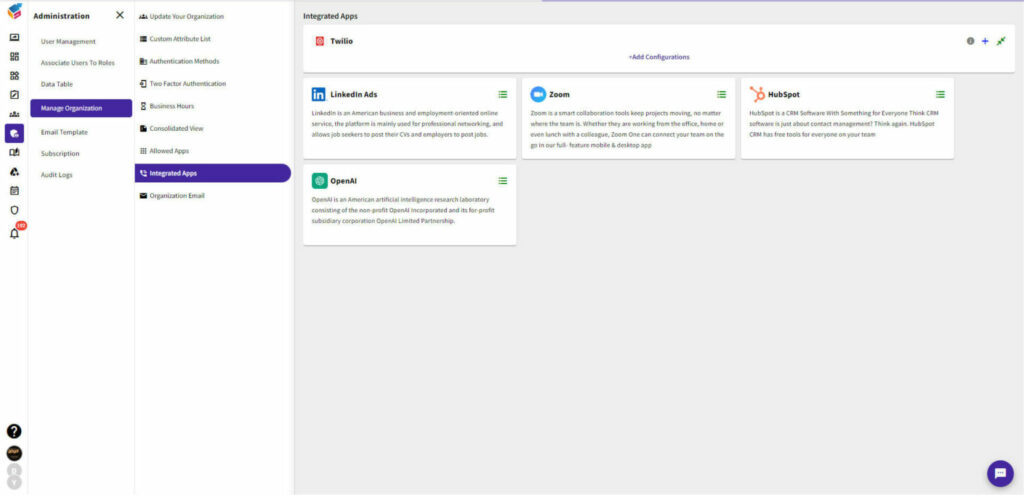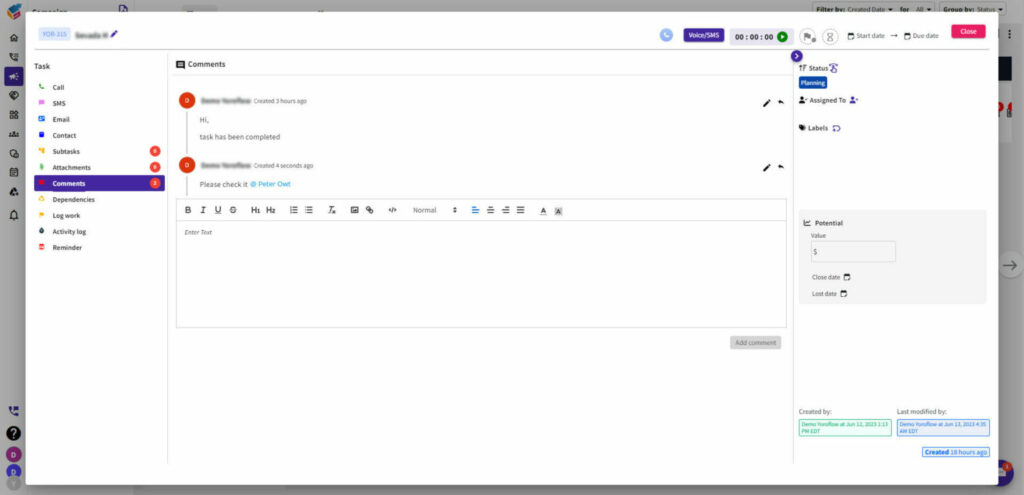Table of Contents
Cross-selling is undoubtedly one of the most effective marketing strategies available today. As advertising costs continue to rise steadily, maximizing the value of each transaction has become crucial for the success of your business.
This comprehensive guide will provide an in-depth exploration of cross-selling, presenting tried-and-tested strategies that will significantly boost your profits. By examining numerous real-life examples from successful brands, you will gain a clear understanding of the underlying principles of cross-selling. Additionally, we’ll explore the integration of a customer relationship management platform, sales strategies, sales plan, cross-sale, customer management software, b2b sales, and customer lifetime value into this strategic approach, ensuring a holistic and effective implementation on your own website.
Excited to get started?
Let’s dive right in!
What is cross-selling and why should you care?
Cross-selling is the practice of offering additional products or services to a customer who is already making a purchase. It involves suggesting related or complementary items that can enhance the customer’s experience or meet their needs more comprehensively.
Cross-selling is a powerful marketing technique because it enables businesses to increase their revenue per customer and maximize the value of each transaction. By strategically offering relevant and appealing products or services, businesses can encourage customers to spend more and explore a wider range of offerings. This not only boosts sales but also enhances customer satisfaction and loyalty.
As a business owner or marketer, you should care about cross-selling strategy because it offers numerous benefits. It allows you to:
- Increase revenue: By persuading customers to add extra items to their purchase, you can generate additional sales and revenue.
- Enhance customer experience: Cross-selling helps customers discover products or services that complement their original purchase, enhancing their overall satisfaction.
- Build customer loyalty: By providing personalized and relevant recommendations, you can strengthen customer relationships and foster loyalty.
- Maximize marketing efficiency: Instead of solely relying on acquiring new customers, cross-selling allows you to extract more value from existing customers, improving your return on investment.
- Gain a competitive edge: Effective cross-selling strategies can differentiate your business from competitors, showcasing your understanding of customer needs and preferences.
The differences between cross-selling vs upselling
Cross-selling and upselling are two distinct marketing strategies aimed at increasing revenue and maximizing the value of each customer transaction. While they have similar goals, there are important differences between the two approaches.
Cross-selling: Cross-selling involves offering additional products or services that are related or complementary to the customer’s original purchase. The idea is to suggest items that enhance the customer’s experience or provide a more comprehensive solution. For example, if a customer buys a laptop, cross-selling could involve offering a laptop bag or antivirus software. Cross-selling aims to expand the customer’s purchase by introducing them to related products they may find useful.
Upselling: Upselling, on the other hand, involves encouraging customers to upgrade or purchase a higher-priced version of the product or service they are considering. The goal is to convince the customer that the higher-priced option offers more value, features, or benefits compared to the original choice. For example, when a customer is looking at a basic smartphone, an upselling technique would be to highlight the advanced features and performance of a higher-end model, persuading them to choose the premium option.
Key differences:
- Focus: Cross-selling focuses on offering additional products or services that complement the customer’s original purchase. Upselling, on the other hand, aims to persuade the customer to upgrade or choose a higher-priced version of the product or service.
- Offering: Cross-selling involves suggesting related or complementary items, while upselling involves presenting higher-priced alternatives.
- Purpose: Cross-selling aims to enhance the customer’s experience, provide convenience, and meet their broader needs. Upselling aims to increase the customer’s purchase value and generate higher revenue by convincing them to choose a more expensive option.
- Strategy: Cross-selling is about broadening the customer’s purchase by introducing relevant add-ons. Upselling is about convincing the customer to opt for a higher-priced option.
In practice, businesses often use a combination of cross-selling and upselling techniques to maximize their revenue potential. By understanding the differences between these two strategies, businesses can effectively implement them in their sales processes and tailor their approach based on the specific needs and preferences of their customers.
Pros and cons of cross-selling
Cross-selling offers several advantages for businesses. Firstly, it allows them to increase their revenue by generating additional sales from existing customers. By suggesting related or complementary products or services, businesses can maximize the value of each customer transaction. Cross-selling also helps to enhance customer satisfaction by offering them a more comprehensive solution and meeting their broader needs. Additionally, it can strengthen customer loyalty and foster long-term relationships.
However, cross-selling does have some potential drawbacks. If not executed properly, it can come across as pushy or irrelevant, leading to a negative customer experience. There is also a risk of overwhelming customers with too many options or distracting them from their original purchase. Therefore, businesses should carefully tailor their cross-selling strategies to ensure relevance, personalization, and a focus on customer satisfaction.
Dos and do nots of cross-selling
Dos of Cross-Selling:
- Understand your customers: Take the time to analyze your customers’ preferences, needs, and purchase history. This will enable you to make informed cross-selling recommendations that are relevant and valuable to them.
- Offer complementary products or services: Identify items that naturally complement the customer’s original purchase. The cross-sell should enhance their experience or provide added value. For example, if a customer buys a camera, suggesting a tripod or extra lenses would be relevant.
- Personalize recommendations: Tailor your cross-selling suggestions to each individual customer. Utilize data and customer segmentation to offer personalized recommendations that align with their specific interests and buying patterns.
- Provide clear and concise information: Clearly communicate the benefits and value of the cross-sell item. Highlight how it complements the customer’s original purchase and why it’s a valuable addition.
- Display cross-selling options at relevant touchpoints: Present cross-selling opportunities during the customer journey at appropriate moments, such as during checkout, on product pages, or through targeted email campaigns. Timing is crucial to maximize the chances of success.
- Offer incentives or discounts: Provide incentives, such as discounts or exclusive offers, to encourage customers to take advantage of the cross-selling suggestions. This can increase their motivation to add the additional item to their purchase.
Do nots of Cross-Selling:
- Push irrelevant products: Avoid suggesting products that have no logical connection or relevance to the customer’s original purchase. This can lead to confusion, frustration, and a negative customer experience.
- Oversell or pressure customers: Respect your customers’ choices and avoid aggressive sales tactics. Pushing too hard or pressuring customers into buying additional items can damage trust and harm the overall customer relationship.
- Overwhelm with options: Limit the number of cross-selling suggestions to avoid overwhelming the customer. Present a few well-curated options rather than bombarding them with an extensive list of choices.
- Sacrifice customer satisfaction for short-term gains: Focus on building long-term customer relationships and prioritize customer satisfaction over immediate sales. Pushing irrelevant or unnecessary cross-sell items may generate short-term revenue, but it can harm trust and loyalty in the long run.
- Ignore customer feedback: Pay attention to customer feedback and adjust your cross-selling strategies accordingly. Consider their preferences, complaints, and suggestions to continually improve the relevance and effectiveness of your cross-selling efforts.
By following these dos and avoiding the do nots, you can implement cross-selling strategies that are customer-centric, effective, and enhance the overall customer experience.
Start cross-selling today with YoroCRM
Are you ready to take your sales strategy to the next level?
Discover the immense potential of cross-selling with YoroCRM, the ultimate solution for boosting revenue and providing exceptional customer experiences.

With YoroCRM’s advanced features and intuitive interface, you can effortlessly implement cross-selling techniques that drive results.
Here’s how YoroCRM can help you succeed:
- Customer Insights: Gain deep insights into your customers’ preferences, purchase history, and behavior. Leverage this valuable information to identify the perfect cross-selling opportunities.

- Intelligent Recommendations: YoroCRM‘s intelligent algorithms analyze customer data to generate personalized cross-selling recommendations. Present relevant add-on products or services that will truly resonate with your customers.

- Seamless Integration: YoroCRM seamlessly integrates with your existing sales processes, making cross-selling a breeze. It ensures that cross-selling opportunities are presented at the right time and in the right context.

- Automated Workflows: Save time and effort with YoroCRM‘s automated workflows. Set up triggers to prompt cross-selling suggestions based on specific customer actions or events, ensuring a timely and targeted approach.

- Sales Collaboration: Foster collaboration among your sales teams with YoroCRM‘s centralized platform. Share cross-selling success stories, best practices, and customer insights to drive sales growth collectively.

- Performance Analytics: Track the success of your cross-selling efforts with comprehensive performance analytics. Gain valuable insights into conversion rates, revenue generated, and customer response, empowering you to fine-tune your strategies.
Don’t miss out on the tremendous potential of cross-selling. Start using YoroCRM today and unlock new revenue streams while providing exceptional customer experiences. Contact us to learn more and schedule a demo.
Start cross-selling today with YoroCRM and watch your sales soar to new heights!




